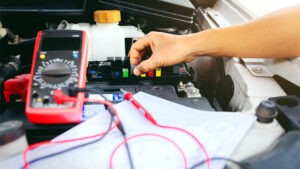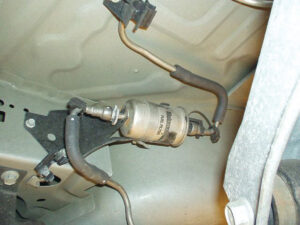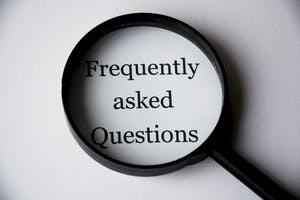One of the most difficult problems to diagnose in your car is a faulty fuel pump. Finding out that your car is suffering from such an issue is hard unless you know what all symptoms your car shows in such a situation.
The fuel pump of your car is what is responsible for delivering fuel from the storage tank to the engine. It works along with several other auto parts to accomplish this task. Thus, like brakes, a fuel pump is another important part of your car. So you need to know the several weak fuel pump symptoms to understand what is going on with your car and fix it.

Like every other part of a vehicle, fuel pumps are also prone to wearing out with time. Several other factors can also pave way for such an issue. When your fuel pump starts facing problems it shows several symptoms to let you know about the situation. The article tries to cover these symptoms along with methods to temporarily fix them. Read on to find out more!
Table of Contents
What Is A Fuel Pump?
It is important to know exactly what a fuel pump of your car is before getting further into the topic. The responsibility of sending fuel from the gas tank through the fuel filler to the fuel trail is the work of a fuel pump. It may be mechanically or electrically controlled. Fuel is then further sent to the injectors which spray into each engine cylinder’s combustion chamber.
Any vehicle that has an internal combustion engine comes with a fuel pump. So when you start your vehicle, the fuel pump gets triggered which we can identify with the hum that your vehicle delivers the fuel to your engine from the gas tank.
Fuel pumps even were primarily run mechanically, there are now several other methods that are used to run them. This lets us classify fuel pumps into several types which are
- Mechanic fuel pumps
- Electric fuel pumps
- In-tank
- Inline
- Rotary vane
- Gerotor
The type of fuel pumps used differs from vehicle to vehicle. Old vehicles usually are equipped with mechanical fuel pumps while most modern vehicles contain electric fuel pumps.
Causes Of Fuel Pump Failure
Before going into several weak fuel pump symptoms, let’s check a few common causes that lead your vehicle’s fuel pump to wear out
1. Fuel Contamination
The tank and the fuel pump can be contaminated if the fuel has undesirable items like corrosive particles, debris, and moisture.
2. Clogged Strainers/ Filters
The above-mentioned contaminants will clog the filter and strainers of the fuel pump, thus leading to decreased flow of fuel to the engine. This is one of the major causes of weakened fuel pumps.
3. Electrical Issues
In the case of electrically run pumps, issues like rusted connectors, loose connectors, or melted wiring and connectors can happen, leading to faulty fuel pumps.

7 Common Weak Fuel Pump Symptoms
As mentioned above, a fuel pump makes sure that the fuel is delivered to the engine from the gas tank at the appropriate pressure. Any issue with the fuel pump thus can cause performance issues and can even result in the breaking down of your vehicle. In such cases, your vehicle will surely show at least any of the following poor fuel pump symptoms
1. Whining Noise From The Fuel Tank
The most common weak fuel pump symptom is the occurrence of a whining noise from the pump. This can be easily recognized as the noise will be fairly loud and unusual.
2. Difficulty Starting
Another very common faulty fuel pump symptom is the difficulty you face to start the vehicle. This is because the weakened fuel pump of your vehicle is finding it hard to reach the required pressure to pump the fuel to the engine. This is also an easily recognizable symptom and if you notice such a change in your vehicle, you can conclude that your fuel pump is having a difficult time.
3. Sputtering Engine
This is another common symptom of a worn fuel pump. If your engine sputters unusually when you try to change the speed of your vehicle, then you can conclude that your fuel pump is facing some issues and is seeking help. This happens when your fuel pump cannot provide enough fuel for the engine at the right pressure and time.
4. Overheating

If you notice a rising temperature in your car’s thermometer, then you can conclude that its fuel pump is deteriorating and needs to be fixed immediately. This is a serious symptom and if the reason is not a faulty pump, it could be happening because of some other reasons so make sure to get your vehicle checked as soon as possible.
5. Car Surging
A weakened fuel pump will cause your car to surge indicating that it requires immediate repair. This however usually happens at a random constant speed and can be hard to notice.
6. Low Gas Mileage
When filling your vehicle with fuel, if you feel that you are filling more than the usually needed amount, you can trace the issue to a faulty fuel pump. So if you feel so more than a couple of times, do not ignore it and get your vehicle checked by a mechanic.
7. Car Not Starting
We earlier discussed the difficulty in starting a car as a weak fuel pump symptom. Your vehicle not starting at all is also another serious symptom of a faulty fuel pump. If your fuel pump has reached a level that it can’t work, it refuses to start resulting in your car breaking down. This issue can however be caused by other internal problems too, so getting the help of a mechanic is highly advised.
How To Fix A Weak Fuel Pump?
If your vehicle starts showing the aforementioned weak fuel pump symptoms, then it’s time for you to fix it or get it fixed as soon as possible. It is always advised to take your vehicle to your mechanic immediately when your vehicle starts behaving unusually. However, there are also methods that you can adopt to temporarily fix your fuel pump without actually replacing it. Here is a stepwise explanation of how to temporarily fix your fuel pump
- First Step: You can find a vacuum line that connects to the fuel pressure regulator. Remove it and check if there is fuel inside. If there is, then you can conclude that your vehicle’s regulator has stopped working.
- Second Step: Connect back the vacuum line to the regulator.
- Third Step: Find and remove the protective cap to let you connect the hose of the fuel pressure gauge.

- Fourth Step: Open the test gauge for fuel pressure in a package.
- Fifth Step: Fix the line to the test port after fitting the gauge to the right adapter.
- Sixth Step: Turn on the ignition key. Normally, the gauge has to rise to 45 to 48 PSI while the throttle up to 13 to 17 PSI. If you notice that it worked smoothly, then you can conclude that your fuel pump is working fine. However, if there is no pressure indicated on the gauge, then you have to examine the fuse and relay in the power distribution center. It could also be a problem with the pressure regulator.
- Seventh Step: If you get a lower fuel pressure than the accepted 52 PSI when the engine is in an idle mode, it indicates that there is either a pump failure or the fuel filter is blocked.
- Eighth Step: After finishing the test, use a cotton towel to suck up the excess fuel that is coming from the hose. If the fuel continues to leak after pulling out the hose, soak it up with a cotton towel.
- The Final Step: Once you have finished soaking the excessive fuel, you have to reinstall the dust cap and clean the area with a towel. Once you finish the cleaning, confirm that there are no fuel leakages in the area.
How Much Does A Fuel Pump Replacement Cost?
A fuel pump with good quality will cost around $300 to $1000. In addition to the pump, you will have to pay between $200 to $400 to get it fixed and running.

What Happens When A Terrible Fuel Siphon Is Falling Short On Fuel?
Low fuel strain can prompt motor discharge failures, low-speed increase, unpleasant standbys, and the motor slows down. If your check motor light is on and your vehicle has been slowing down, you might have a fuel siphon disappointment.
Might A Fuel At Any Point Siphon Be Powerless Yet At The Same Time Work?
To Be Aware Of
A frail fuel siphon might in any case siphon fuel, however, the vehicle might encounter trouble beginning from the absence of strain. A debilitated fuel siphon can make the vehicle take a larger number of wrenches to begin than ordinary, and in additional genuine cases might try and make the vehicle require various turns of the key before it will begin.
How Would You Analyze An Awful Fuel Siph on?
To affirm that your siphon has fizzled, check the tension in your fuel lines with a fuel pressure measure; if it understands zero, your siphon is reasonably dead. You can likewise check your vehicle’s breaker box; a blown fuel siphon combine is one more solid side effect of a bombed siphon.
How Might You Tell An Awful Fuel Siphon?
If you notice these six signs, consider taking your vehicle to your neighborhood showroom to have the fuel siphon supplanted.
Whimpering Noise From the Fuel Tank. …
The Engine Sputters or Surges. …
Inconvenience Starting the Car. …
Loss of Power Under Load. …
Diminished Gas Mileage. …
Slowing down at High Temperatures.
Conclusion
A good Fuel Pump is essential for the smooth running of your vehicle. Everyone behind the wheels deserves a smooth driving experience. Thus if your vehicle shows any bad fuel pump symptoms, do not hesitate to immediately consult your vehicle mechanic and check if it should be repaired or replaced.



